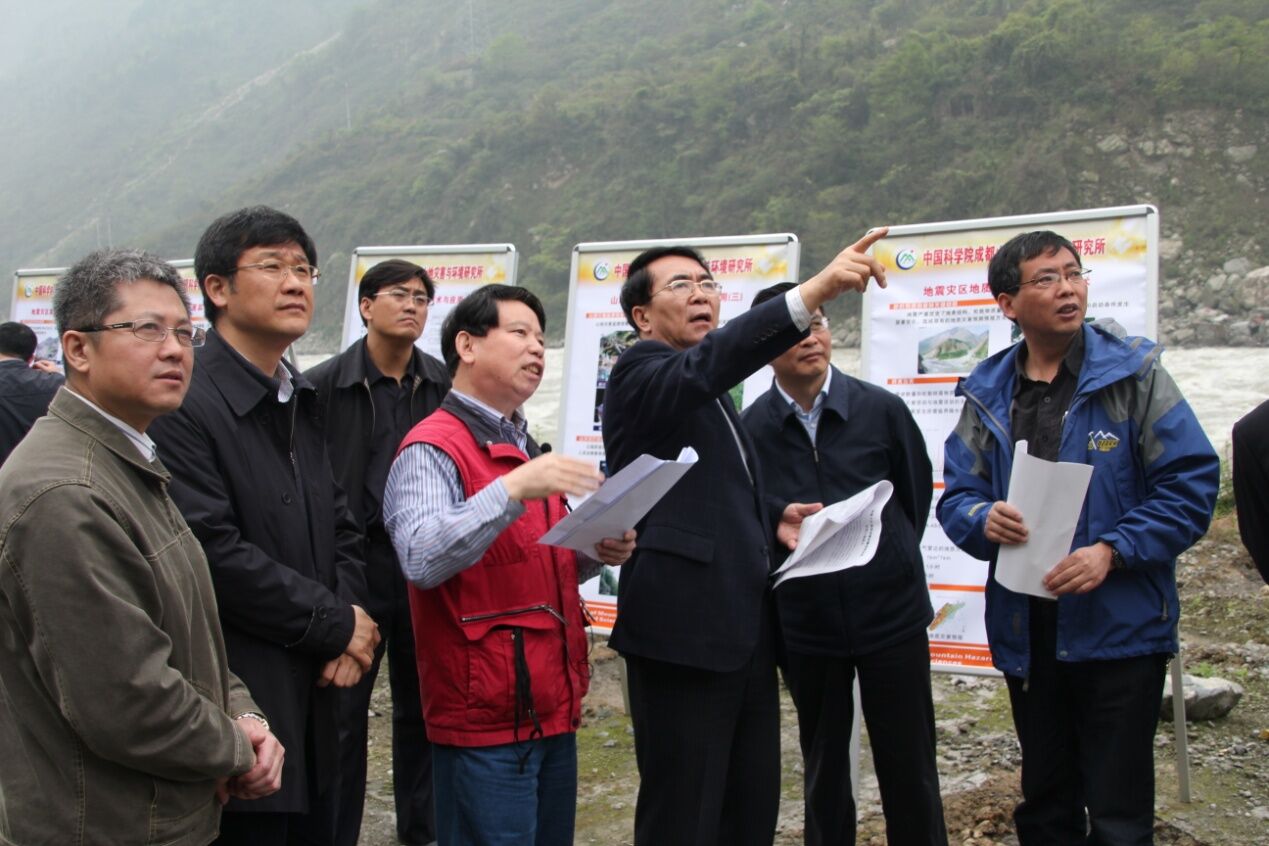| Multimedia |

|
| Location: Home > Research > Research Progress |
| IMHE reveals the rainfall thresholds for debris flows in Wenchuan Earthquake area | TEXT SIZE: A A A |
|
The 2008 Wenchuan Earthquake greatly altered the thresholds for rainfall-triggered debris flows within the affected area. Debris flows were widely and densely distributed, and they exhibited a range of differing local rainfall thresholds. It is of both scientific and practical interest to determine the rainfall thresholds of debris flows in the earthquake affected area. The thresholds previous proposed, were based on only several catastrophic debris flows and can hardly apply to the whole study area. Besides, these studies did not consider the temporal changes of the rainfall conditions, and its spatial distribution, and its relation with the structural and bedrock geology as well as other physical conditions. Dr. Guo Xiaojun and his team in the Institute of Mountain Hazards and Environment, Chinese Academy of Sciences (IMHE, CAS) collected more than 500 debris flow events post-earthquake, and their triggering rainfall information, and analyzed the characteristics of triggering rainfall conditions, and ultimately got the rainfall thresholds for Wenchuan Earthquake area. The thresholds were found to be lower than others obtained in the world, indicating the effect of the earthquake. The spatial distribution of debris flows and their rainfall thresholds were further analyzed. Results show that 49% of debris flows occurred in the highest-intensity seismic zone, 58% occurred within 10 km of active faults, and 49% occurred in areas with humid climate. Rainfall thresholds in these three regions were persistently lower than others. Moreover, debris flows were most frequent in watersheds smaller than 5 km2, and rainfall thresholds tended to decrease with a decrease in watershed size. Given the abundant loose materials available throughout the study area, eleven extreme debris flow-prone sub-regions were selected to illustrate the spatial features of rainfall thresholds in relation to local climate conditions. Analysis of the annual rainfall thresholds showed that the rainfall conditions required for debris flows have increased on the continent during the past 6 years, and present a logarithmic increasing tendency, indicating that the thresholds will recover in the future decades. Recovery of vegetation plays an important role in reducing potential loose material that supply volume for debris flows. Natural solidification, decrease of the potential erosion depth, and surface coarsening make it more difficult to initiate a debris flow, and ultimately increased rainfall conditions required. The change in rainfall thresholds can be predicted and verified for the entire earthquake-affected region. These researches were supported by both the National Natural Science Foundation of China (Grant No. 41301008) and the Chinese Academy of Science (Grant No. KZZD-EW-05). The research achievements have been published in Geomorphology, 263: 208-216, Landslides(DOI 10.1007/s10346-015-0608-z)and Environmental Earth Sciences, 75(2), 109: 1-12. Full text URL 1: http://www.sciencedirect.com/science/article/pii/S0169555X15301744 Full text URL 2: http://link.springer.com/article/10.1007%2Fs10346-015-0608-z Full text URL 3: http://link.springer.com/article/10.1007%2Fs12665-015-5031-1
|